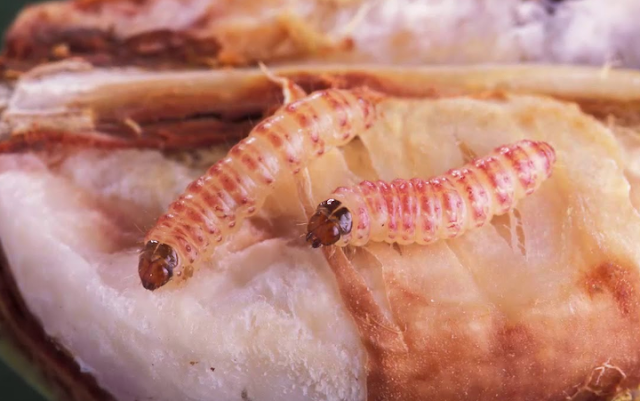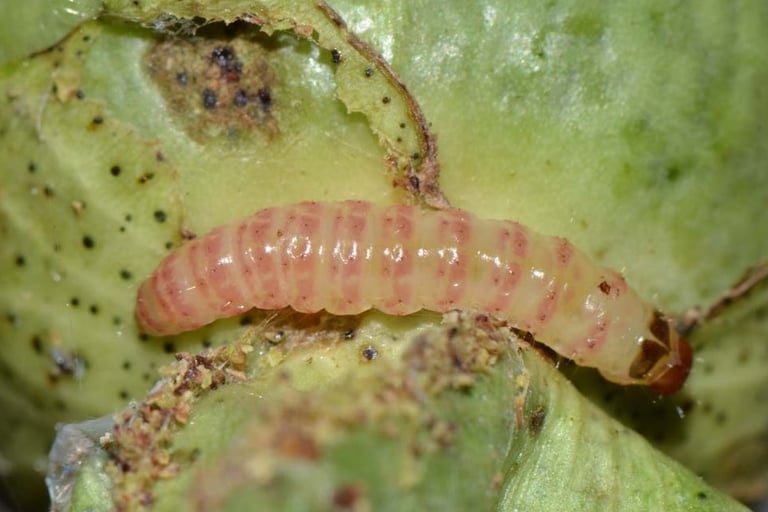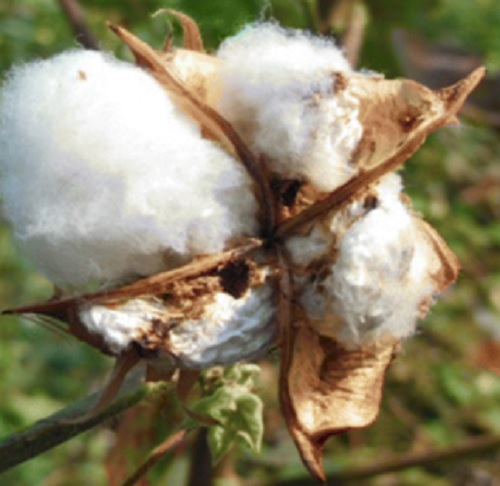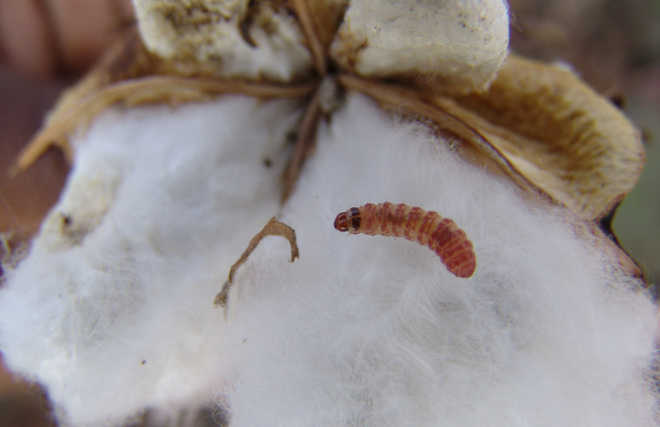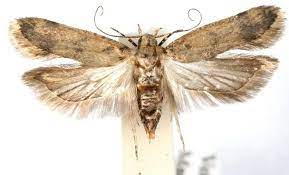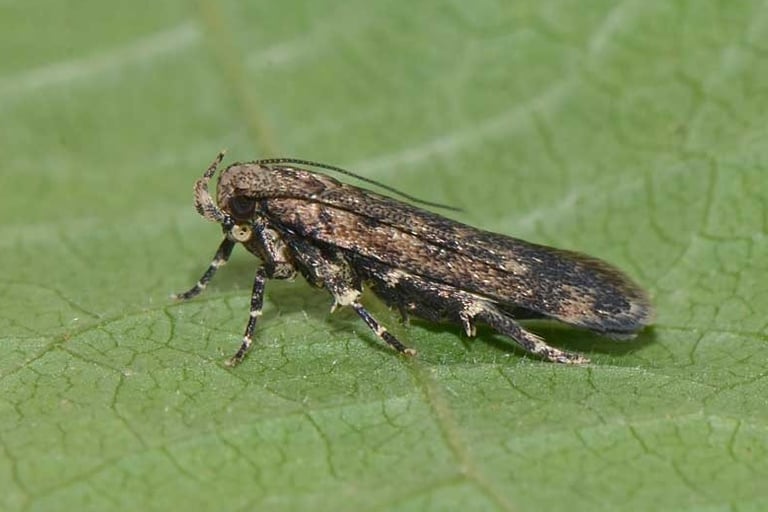Cotton pink bollworm, Pectinophora gossypiella (Saunders) (Lepidoptera: Gelechiidae): Returns to the India's Bt Cotton Fields
Among the bollworms, pink bollworm (P. gossypiella) assumed major pest status in recent past and has known to cause loss in seed cotton yield, oil content, loss in normal opening of bolls, damage of locules, and reduction in seed cotton yield. It affects the quality of the lint.
Cotton Crop
Cotton is one of world’s most essential fibre crops having global significance, cultivated in tropical and subtropical regions of more than 70 countries. In India, cotton is mainly cultivated in three distinct agro-ecological zones (North, Central and South). Cotton is cultivated on an area of 11.91 million ha with average productivity of 445 kg/ha in India during 2021-22. Several biotic and abiotic stresses are constraints in cotton production. The crop is attacked by 1326 species of insect pests throughout the world, of which about 130 different species of insects and mites found to devour cotton at different stages of crop growth in India.
Genetically engineered (GE) seed
Since Lepidopteran insects are considered a major limiting factor in the production of cotton worldwide, genetically engineered (GE) seed technologies were developed to equip cotton plants with built-in protection against these damaging pests (Choudhary and Gaur, 2008; Kathage and Qaim, 2012; Naik et al., 2005; Subramanian and Qaim, 2008). Bt crops produce endotoxins of the Bacillus thuringiensis bacterium, which have lethal effects on Lepidopteran insects (Khan et al., 2018). The Indian Genetic Engineering Approval Committee1 (GEAC) authorized the release of the first generation of Bt cotton seeds for commercial cultivation in 2002 for the Indian market (Flachs, 2019a, 2019b; Kiresur and Ichangi, 2011; Münster, 2012; Ramamurthy, 2000; Scoones, 2008). This first legalized GE crop in India was developed by the Indian seed company Maharashtra Hybrid Seeds Company (Mahyco) in a joint venture with the US-based company Monsanto called Mahyco Monsanto Biotech Limited (MMBL) (Qaim et al., 2006; Sadashivappa and Qaim, 2009). It remains the only legalized GE crop in India to date.
Pink Bollworm (PBW): Pectinophora gossypiella (Saunders) (Lepidoptera: Gelechiidae)
Among the bollworms, pink bollworm (P. gossypiella) assumed major pest status in recent past and has known to cause loss in seed cotton yield, oil content, loss in normal opening of bolls, damage of locules, and reduction in seed cotton yield. It affects the quality of the lint.
The pink bollworm (P. gossypiella) adult is a small, thin, gray moth with fringed wings. The larva is a dull white caterpillar with eight pairs of legs with conspicuous pink banding along its dorsum. The larva reaches one half inch in length.
The female moth lays eggs in a cotton boll, and when the larvae emerge from the eggs, they inflict damage through feeding. They chew through the cotton lint to feed on the seeds. Since cotton is used for both fiber and seed oil, the damage is twofold. Their disruption of the protective tissue around the boll is a portal of entry for other insects and fungi.
Global Distribution of PBW
The pink bollworm is native to Asia, but has become an invasive species in most of the world's cotton-growing regions except USA from where it is eradicated in year 2018 as per announcement of by the U.S. Secretary of Agriculture, Sonny Perdue.
Genetically engineered Bt Cotton and its failure against PBW in India
The quest to promote Bt (Bacillus thuringiensis) cotton may suffer a serious setback with scientists from the US-based University of Arizona discovering that the pink bollworm - one of the most destructive agricultural pests -- harbours three genetic mutations that make it resistant to the transgenic variety of the plant. Bollworms usually die when they eat genetically modified (gm) cotton that produces the Bt toxin. But according to the recent finding, more than 500 species of the insect are immune to Bt.
The return of PBW in Indian cotton feilds
The recent return of pink bollworm (Pectinophora gossypiella) pests in several Indian states has provided cause for concern about widespread resistances in Lepidopteran pests towards the endotoxins produced in Indian Bt cotton plants as well as about severe setbacks in regard to cotton farmers’ livelihood security. The infestation has spread throughout the central and southern zone of cotton production since the kharif season of 2015, affecting fields in Gujarat, Madhya Pradesh, Maharashtra, Karnataka, Andhra Pradesh and Telangana with anticipated yield losses of up to 30% (Fand et al., 2019: 313; Mohan, 2017; Naik et al., 2018).
The cotton in Punjab, Haryana, and Northern Rajasthan, which are the main cotton-growing regions of the North, has been reported that Pink bollworm surfaces in cotton early this year (2022) in Haryana, Punjab.
Pesticides Resistance
Pink bollworm has recently developed resistance to various kinds of insecticide in the field. The resistance status of pink bollworm to several classes of insecticides currently used in cotton fields was evaluated. Two field-collected P. gossypiella populations have developed resistance to several classes of insecticides. Out of the seven insecticides tested four insecticides (chlorpyrifos, profenofos, thiodicarb and carbaryl) showed the Resistance Ratio (RR) values above 20 folds, against two field-collected populations whereas the other three insecticides (fenpropathrin, spinosad and abamectin) had RR values less than 10 folds. Hany K. Abd-Elhady and Ahmed A. Abd El-Aal, 2011.
Control and Management at Crop and Field Level
Looking at pesticide resistance status and the failure of multiple pesticide molecules and genetically engineered Bt cotton to control the population of P. gossypiella, a sustainable containment strategy based on integrated pest management is recommended. During our field trials in Gujrat, Maharashtra and Telangana in cotton crops; our BraveHawk® Series Devices have shown quite promising results. The deployment of BraveHawk Series Devices in the field resulted in keeping the damage to the crop well below the Economic Injury Level (EIL). The actual damage was less than 2.5%.
